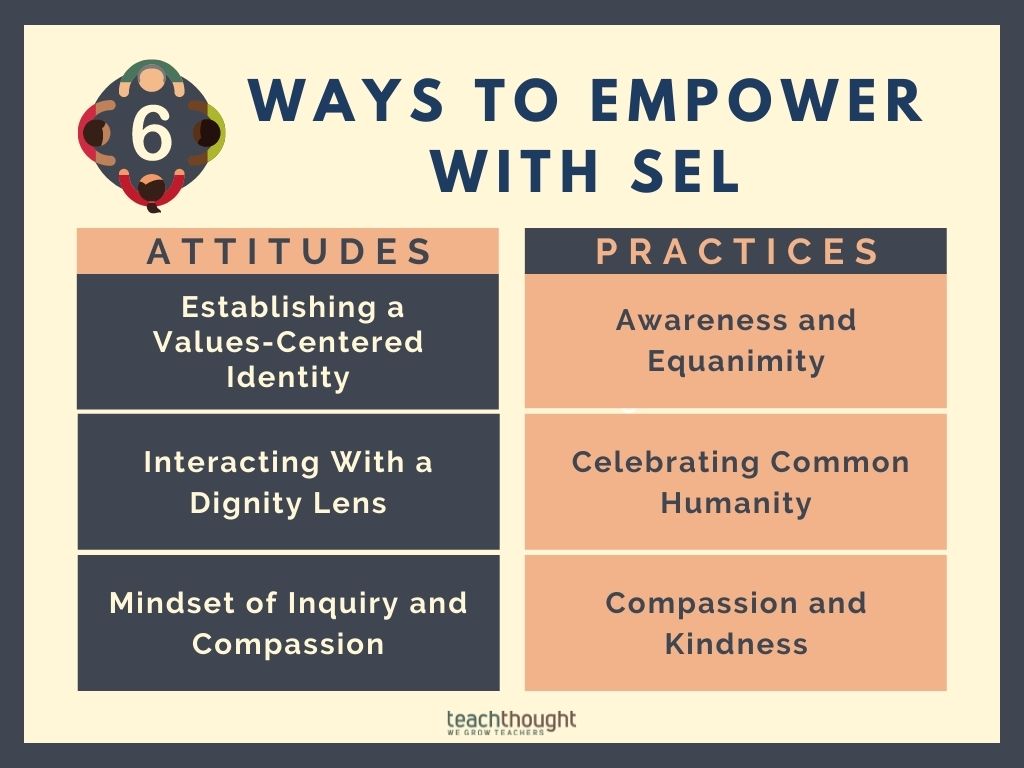
What Are The Benefits Of Social-Emotional Learning?
by Drew Perkins and Jason Littlefield
In recent years, educators and students have increasingly endured a social-emotional crisis as divisiveness and chaos continue to spread through our culture.
As education leaders answer the call to address these needs that are outside the traditional realm of teaching and learning it is important they draw from resources/strategies designed for increasing human potential and bettering the human condition. An important question for educators to ask is, “How can we empower educators and students to a better well-being with a framework that cultivates humanity’s most positive traits both intrapersonal and interpersonal?”
What Is The Empowered Humanity Theory?
Empowered Humanity Theory (EHT) incorporates intrapersonal, interactional, and behavioral frameworks to strengthen the neural pathways associated with peace and resilience. Embedding Empowered Humanity Theory in Social Emotional Learning (SEL) and our teaching and learning can help students to have a more positive sense of individual and collective well-being.
Empowered Humanity Theory is a curation of six attitudes and practices intended to serve as a framework for how we interact/respond to ourselves and others during both times of joy and times of chaos. The 3 Attitudes of EHT involve: establishing a values-centered identity, interacting with self and others with a dignity lens, and disrupting mindsets of fear/judgment with inquiry/ compassion.
The 3 Pathways of Practice are: practices that build awareness and equanimity, practices that celebrate our common humanity, and practices that build kindness and compassion for self and others.
Leveraging the concept of neuroplasticity; the idea that we are the product of the attitudes and habits we practice, early and prolonged engagement in EHT practices can establish an empowered society of individuals more at peace with themselves and with others at the neurological level. Because we know teachers aren’t trained as therapists it is important to note, Empowered Humanity Theory (Tier I, universal instruction) is not a therapeutic resource but an academic theory rooted in communication and neuroplasticity we can use as an overlay to help us think and feel better.
See also What Is Social-Emotional Learning?
How do we grow a climate and culture that empowers adults and students to bring out the best in themselves and others? Use a framework and lens that is more human-centered than ideological or political and engage in exercises that help establish that empowering mindset using these six attitudes and practices.
6 Benefits Of Social-Emotional Learning For Children
Establishing a Values-Centered Identity
Individuals connected to their values have a self-imposed system that influences their behaviors and allows them to be true to their authentic selves. Working groups (including classrooms) that operate with shared values are less likely to cause harm to each other. Within the teaching and learning environment, this translates to educators/students being more connected to their work, each other, and causes greater than themselves.
Interacting With a Dignity Lens
Proactively developing and maintaining a human dignity lens, especially during moments of chaos and dysregulation with others, decreases power struggles, relationship damaging behaviors and increases our understanding of each other. When we can see our colleagues (and students) as we see ourselves, we can attune to their needs and meet them. The results are evidenced in a positive climate and culture.
Mindset of Inquiry and Compassion
Replacing mindsets of fear and judgment with inquiry and compassion when potential is limited will exponentially affect teaching and learning. How can you measure the impact of an educator who chose not to judge and dismiss a student; but instead chose to inquire about misbehaviors with compassion and understanding and as a result helped the student discover their talents and motivation?
How can you measure the impact of a child choosing to believe in themselves during conflict?
See also What Is Social Learning?
Practice of Awareness and Equanimity
Practices that build awareness and equanimity (a mental calmness) provide opportunities for teachers and students to discover more about themselves and each other and maintain a sense of calm during moments of chaos and conflict. Educators are constantly bombarded with moments of chaos and conflict. Strengthening equanimity provides opportunities to make clearer and more rational decisions during those moments.
This also has the potential to reduce the amount of harm and conflict in our schools and communities.
Practice of Celebrating Common Humanity
Simple acts of kindness and being compassionate to oneself and others releases oxytocin in the brain and make us more open to each other and to learning. Learning environments that promote kindness and compassion also promote academic risk-taking and innovation.
See also How To Teach For Knowledge Through Humility
Practices of Compassion and Kindness
Practices that celebrate our common humanity decrease our propensity for and the human capacities of prejudice, aggression, and cruelty. Embedded within the teaching and learning environment create the foundation for safe learning environments for students and encouraging working environments for adults.
If we lean into the 5 Social-Emotional Learning competencies many educators are familiar with (self-awareness, self-management, social awareness, relationship skills, and responsible decision-making) we can use the EHT framework and its six pieces as a rubric of sorts. We want students and adults to be their best in those competencies.
As we consider our mindsets and practices in adult interactions like PLC’s on down to adult to student and student-to-student interactions, we can use them as an evaluation tool to foster growth and social and emotional well-being. Not only can that help with the shorter-term goals of academic learning but also with the more healthy trajectory of adulthood we need to cope and succeed in the modern world.